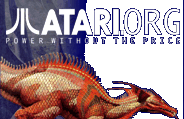Author: Mike Bouma (cmb15.med.rug.nl)
Date: 07-03-1999 07:19
To Bengy: Here is a little article from Mr Hal Greenlee that proves NASA used Amigas and still use them today. But nowadays QNX is an important OS for NASA. :)
Sincerly, Mike Bouma.
"From: Hal Greenlee, NASA-retired
Yes, there is an elaborate system of Amigas used by NASA at Cape Canaveral, Hangar AE since 1987. I wrote an article for the August 1996 Amiga Computing which details how the Amigas are used, and was a member of the team that built this system. I acted as the Commercial Developer for our group, and did a lot of the
evaluating and buying of equipment. I was always looking for the latest storage, speed-enhancing and other devices to increase system capabilities.
This system was primarily built to support two unmanned launch programs, Atlas-Centaur and Delta. It processes vehicle (and sometimes spacecraft) data for
presentation on stripcharts, monitors and printouts. Hangar AE has served as a facility for both NASA and contractor personnel to monitor all major pad tests and
launches. It has been important to the vehicle contractors because their own facilities often were not roomy enough or flexible enough for all necessary personnel to
monitor tests. Data is also sent around the Cape, and to contractor facilities in other parts of the country, where we set up small versions of the Amiga systems.
Engineers who could not travel to the Cape can use these remote systems to look at their own selection of data channels in real time during pad tests.
The CARDS program data presentation within the AE hangar includes up to 700 stripchart channels, several hundred video monitors, and a number of high- speed
line printers. An engineer sitting at a monitor console can, at any time, set up custom video pages showing any combination of measurements desired, or have select
printouts made at one of the printers.
The first systems were Amiga 1000's with Byte-by-Byte PAL boxes and Ronin Hurricane 14.32 MHz 020 accelerator cards, plus our own design Zorro I cards to
input and output data. The second generation were Amiga 2500's with CSA Rocket Launchers (030/882 50 MHz), and I/O cards re-designed to the Zorro II
shape. The present generation are 4000's in Micronik tower kits with Warp Engine 040-40's and improved I/O cards.
AE does have two 060 cards and one 060/PPC; not much work has been done with the PPC yet, as the programmers have been too busy trying to keep up with
day- to-day tests and software, especially since Dave Brown retired at the beginning of the year.
The multitasking OS has made it possible to do many things in the CARDS program that would be a nightmare or impossible with Windows or a Mac.
Measurements can be added or modified while the system is running. If Centaur powers up while a Delta test is in progress, it can also be handled without rebooting
anything. The remote systems can be re-programmed and tested from the Cape.
People bash Commodore, but we had good working relations with them, and were usually able to get help when we needed it. The engineering troups were fine; management was a mixed bag.
The Amigas should be on the job at Hangar AE for several more years, even if no new Amigas appear.
Hal Greenlee, NASA-retired
HardDrivers Co."
|



